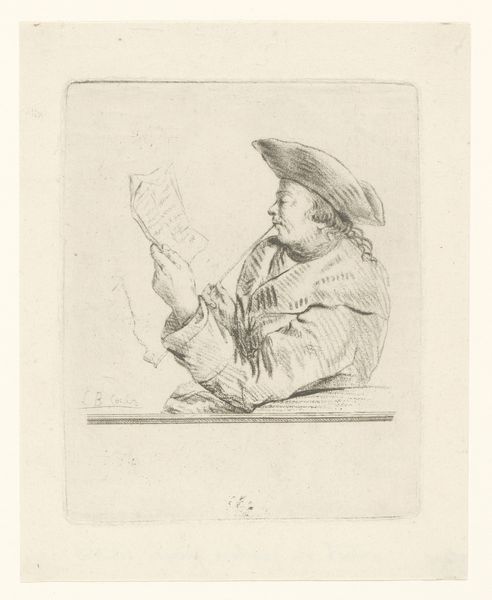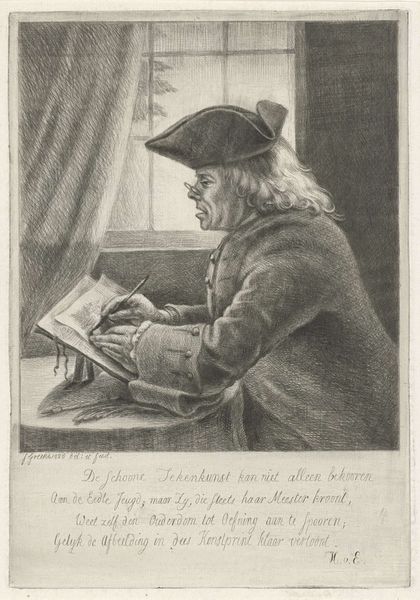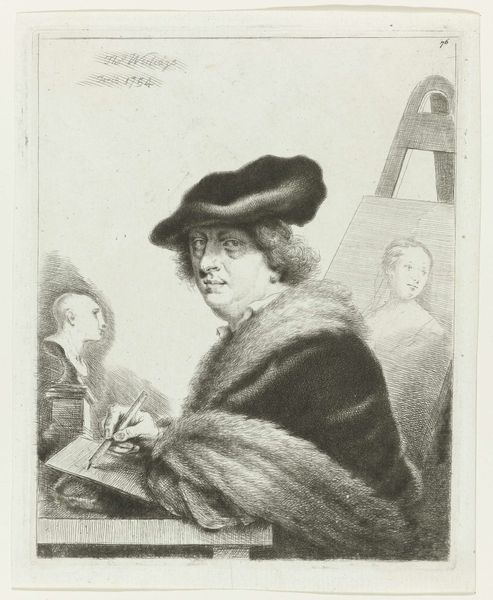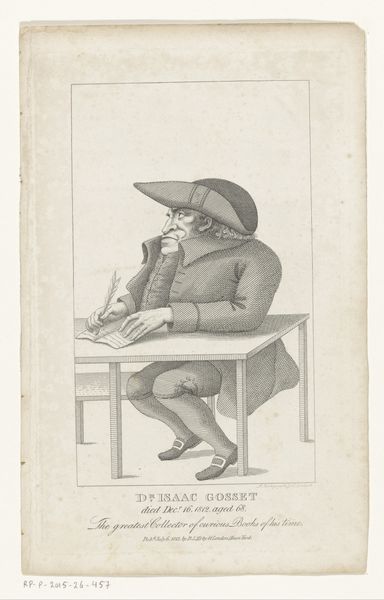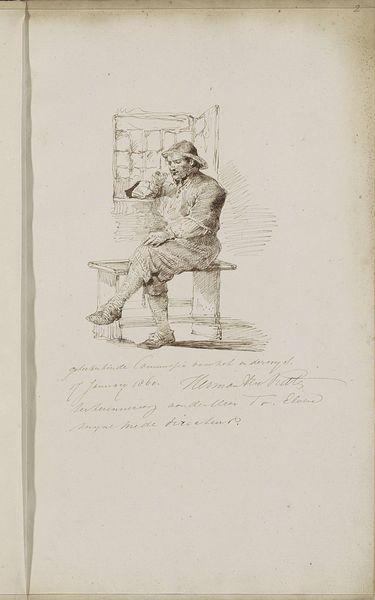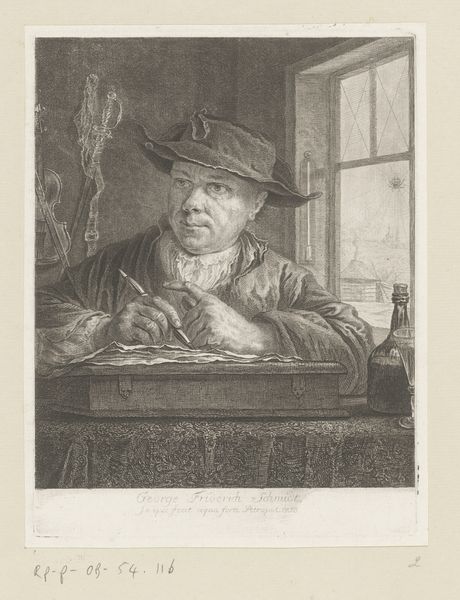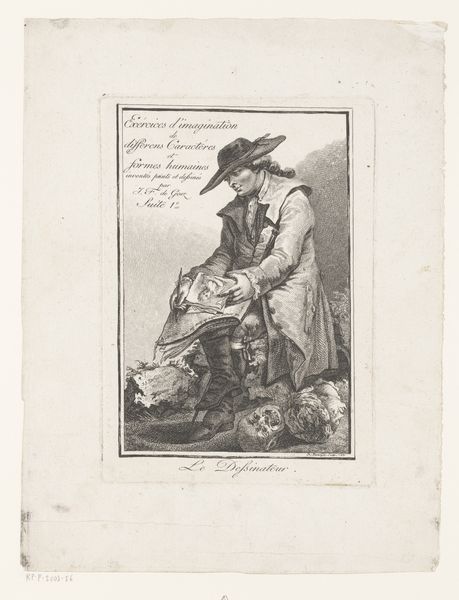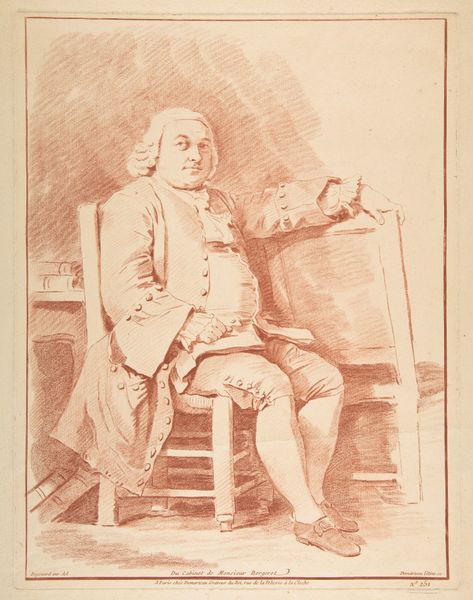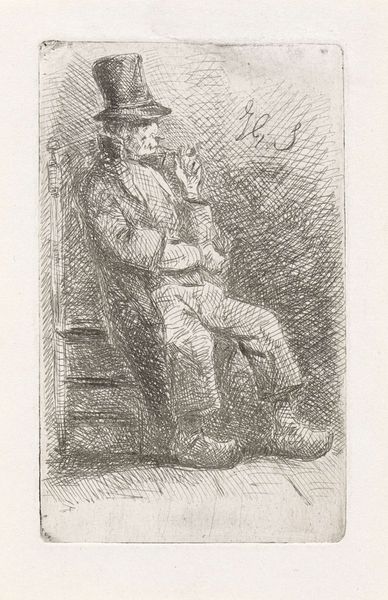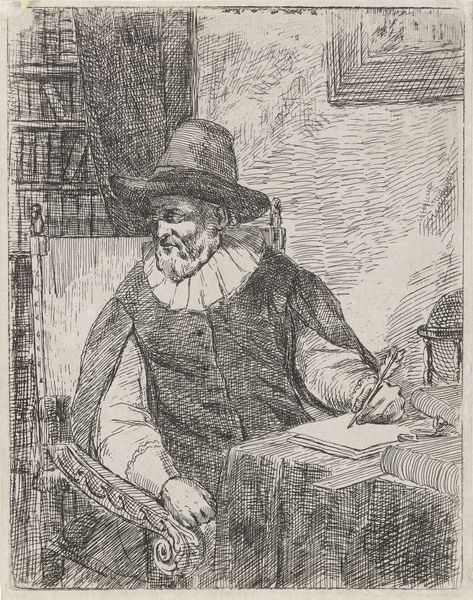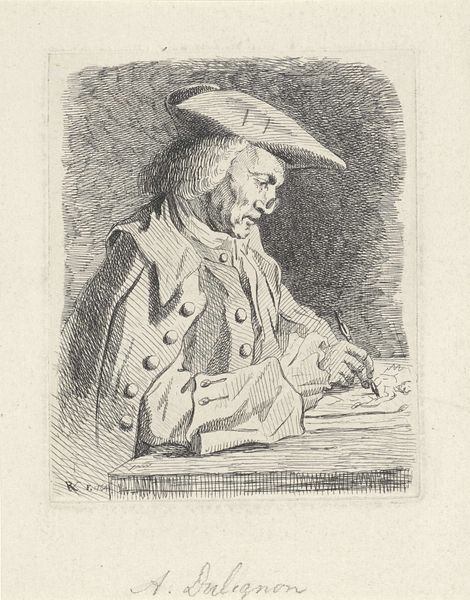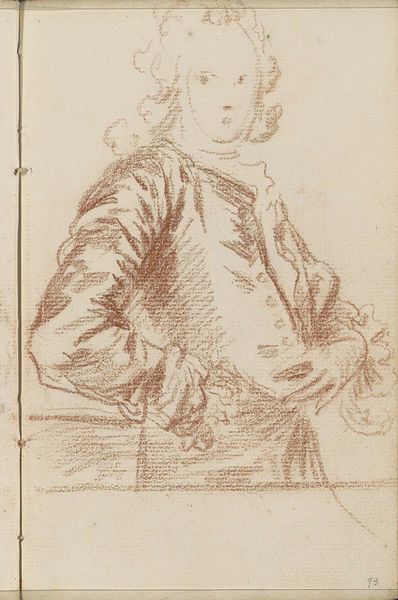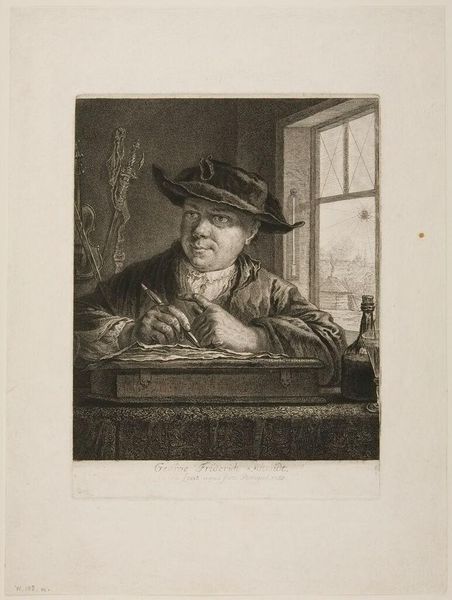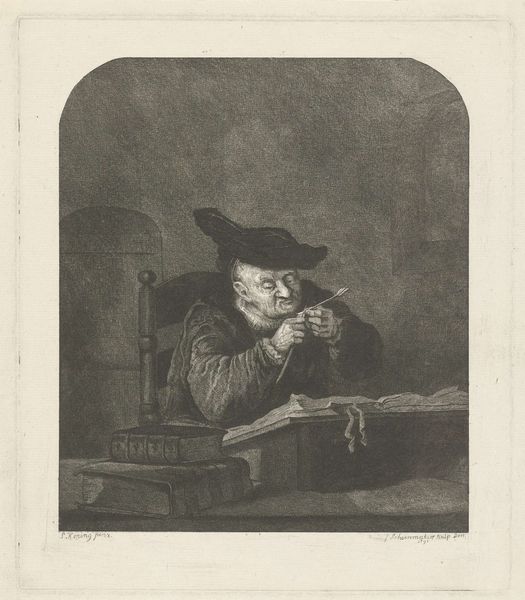
Dimensions: height 160 mm, width 128 mm
Copyright: Rijks Museum: Open Domain
Editor: This is Louis Bernard Coclers's "Portret van de kunstenaar Johannes Janson," created around 1769-1787. It's a pen and ink drawing on paper. I'm struck by the informality of it, the way it captures an artist in what seems like a private moment. What stands out to you in this piece? Curator: Considering the historical context, it's interesting to see how artists portrayed themselves and their peers. This work speaks volumes about the rising status of artists in the late 18th century. The inscription states Coclers invented a process of engraving au Sable, suggesting innovation was just as prized as technical skill. How do you think dedications like these served to promote art in this period? Editor: It sounds like this portrait is not just an image of a fellow artist but is, on a broader level, a sort of promotional piece in and of itself? Was it common for the image's inscription to describe or highlight new methods of creation? Curator: Exactly. Dissemination of new techniques could be as valuable as artistic genius. And dedicating prints to wealthy patrons also underscored the emerging market dynamics within the art world at the time. Do you find it interesting how artists worked to assert themselves both artistically and socio-economically in that era? Editor: That is really interesting. Seeing it that way highlights the power dynamics involved in artistic production. I hadn’t considered the inscription beyond its literal dedication, but now I see how it also comments on the evolving role of artists and patrons. Curator: Precisely. And this simple drawing now serves as a witness to a much larger cultural narrative of innovation and the market, which can change the way you approach art.
Comments
No comments
Be the first to comment and join the conversation on the ultimate creative platform.
